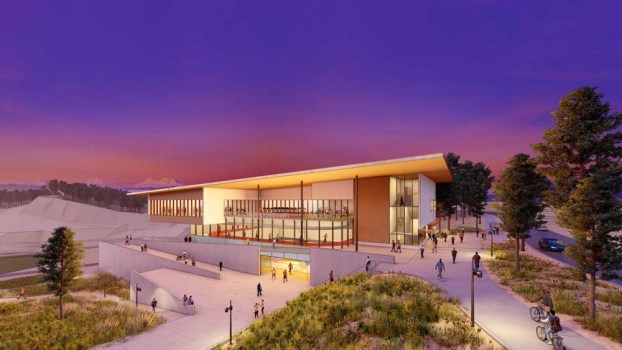OSU-Cascades students advocate for health and recreation center
Published 2:10 pm Wednesday, May 7, 2025
Oregon State University-Cascades students, staff, alumni and community members met with nearly 20 lawmakers Monday in Salem to advocate for funding for a campus health and recreation center at the Bend campus.
Since 2017, students have been contributing fees for the project and have raised nearly $20 million, which would cover about half the construction cost of the building.
“I think it was really valuable to hear that student perspective that was outside of student government. Obviously, my goal was to get positive feedback about our project and our ask,” said Whitney McFarlane, president of the campus student government, the Associated Students of Cascades Campus. “We had 16 to 18 meetings in total, which is incredibly productive. It was really, really cool to be able to bring other students that weren’t affiliated with student government and have them get to experience that.”
The project includes building a 40,000-square-foot student health and recreation center, as well as land remediation on 24 acres of the former demolition landfill that would help form the future innovation district at the Bend campus. The total project would cost $84 million.
The campus is asking for $42 million in state support. In addition to the $20 million from student fees, another $22 million would come from Oregon State University grants and gifts.
McFarlane, 20, is studying political science and social science. The legislators her group met with were “very optimistic and realistic with us,” she told The Bulletin Tuesday.
Legislators showcased the list of top priorities for the Capital Construction Committee as well as how those decisions are made, she said.
“To hear that student perspective on top of it helped us with our case, helped us make our case and really helped them understand why this building and this project is really important for the expansion of OSU-Cascades,” she said. “They understand that they’re not all gonna be able to step into these buildings as a student themselves, but they understand the value and why it’s important for the expansion of OSU-Cascades and its future students.”
Making connections
Sherm Bloomer, the chancellor of OSU-Cascades, also joined the trip to Salem, and said Tuesday, “Students did most of the presentation because they’re putting up $20 million out of their fees for the building. That made an impression on everybody. A lot of people weren’t familiar with the campus, were really interested in the reclamation work. (They) wanted to know how we were doing, where we were.”
This advocacy comes soon after the February opening of the Student Success Center, a 17,500-square-foot building that houses study spaces, student services, academic advising and more. It is the latest of the campus’s buildings, having been under construction since 2023, and was a major part of the expansion’s latest phase. The current land remediation project is the second for the university overall, though the first for the future innovation district. The next phase includes the 24 acres of land remediation and the health and recreation center.
Bloomer said his goals were to raise awareness of the project and to let legislators hear from students and community members about why developing the campus matters, and why this particular project was important.
The branch campus is still finishing the first phase of the land for the innovation district. The land reclamation is done, and all the infrastructure is being worked on now and is expected to wrap up mid-summer, said Bloomer.
A design team is working on the conceptual design for the health and recreation center as well as planned student housing. Teams are also discussing how many services would be able to go into the buildings, with the aim of starting progress soon after receiving funding instead of having to wait.
“Opening the Student Success Center was a big deal for the campus and the students. It’s used all the time, students are in there all the time, student government folks are just thrilled with the space. The innovation district, the land’s almost ready. We’ll have an RFP (request for proposals) out for a partner in the summer,” said Bloomer. “A lot of the federal uncertainty has been challenging for faculty who have been impacted here and there, and worries some of our students. But everybody’s still doing the work and coming to class and doing really interesting things.”
Ana Laura Jacuinde Caballero, 20, is studying business administration and has been involved with community projects since high school. Her goals for the trip were to make a connection with one of the legislators and expand her communications and public advocacy skills, she told The Bulletin Friday.
“I’ve just been involved in my community with programs like Better Together and Juntos, which is just a lot of advocating for Hispanic families, how to get higher education, or just how to get resources to them. And I think all of that experience has really helped me be just more of an advocate person, especially within our school, too,” she said.
As a first-generation college student, Jacuinde Caballero said she’s glad to advocate for her school.
“And also just being around these other people that really, really care for our school and are going to be advocates for it, I think it’s also really cool,” she said. “And just being around them, I just feel that will be such a big help for me as well. To try to learn from them and keep being involved in this type of work.”
Legislators should release a revenue forecast May 14, which will set the budget limit for the Oregon Legislature and allow legislators to have further discussions on what can and can’t be funded.










